Audi e-tron GT vs Dacia Spring – Differences & prices compared
Compare performance, boot space, consumption and price in one view.
Find out now: which car is the better choice for you – Audi e-tron GT or Dacia Spring?
The Audi e-tron GT (Coupe) comes with a Electric engine and Automatic transmission. In comparison, the Dacia Spring (SUV) features a Electric engine with Automatic transmission.
When it comes to boot capacity, the Audi e-tron GT offers 405 L, while the Dacia Spring provides 308 L – depending on how much space you need. If you’re looking for more power, decide whether the 925 HP of the Audi e-tron GT or the 65 HP of the Dacia Spring suits your needs better.
In terms of consumption, the values are 17.90 kWh per 100 km for the Audi e-tron GT, and 13.20 kWh for the Dacia Spring.
Price-wise, the Audi e-tron GT starts at 93300 £, while the Dacia Spring is available from 14500 £. Compare all the details and find out which model fits your lifestyle best!
Audi e-tron GT
The Audi e-tron GT showcases a harmonious blend of luxurious design and electrifying performance, making it a standout in the realm of electric vehicles. Its sleek, aerodynamic contours are not just for show; they contribute to a driving experience that's as smooth as it is exhilarating. Inside, the cabin exudes an air of sophistication, offering cutting-edge technology and premium materials that speak to Audi's commitment to quality and innovation.
details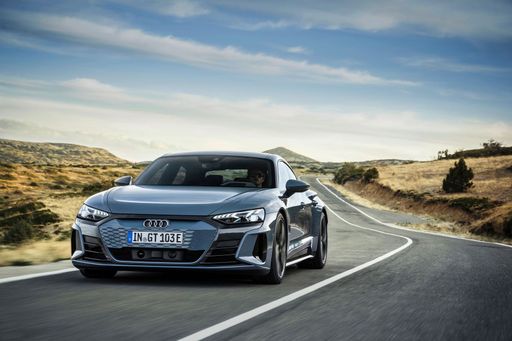 @ audi-mediacenter.com
@ audi-mediacenter.com
 @ audi-mediacenter.com
@ audi-mediacenter.com
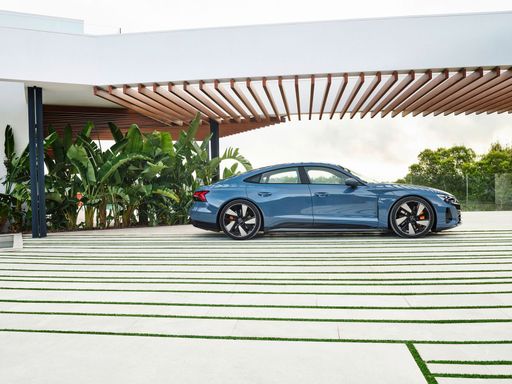 @ audi-mediacenter.com
@ audi-mediacenter.com
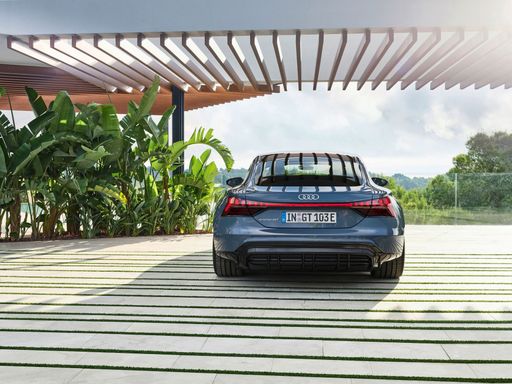 @ audi-mediacenter.com
@ audi-mediacenter.com
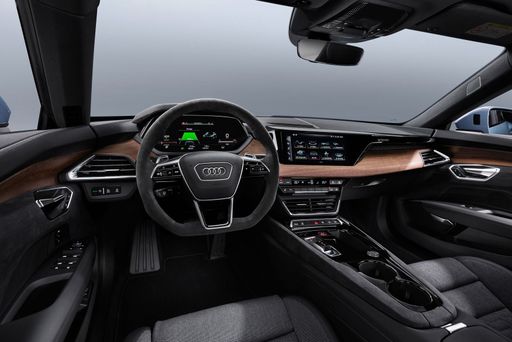 @ audi-mediacenter.com
@ audi-mediacenter.com
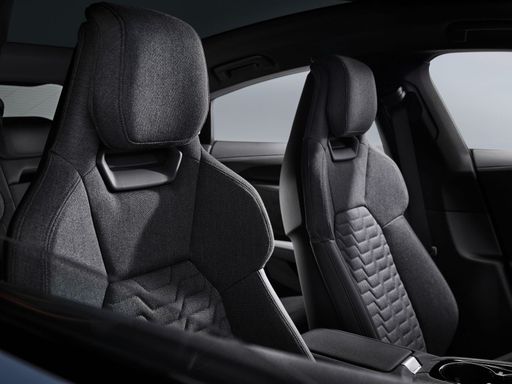 @ audi-mediacenter.com
@ audi-mediacenter.com
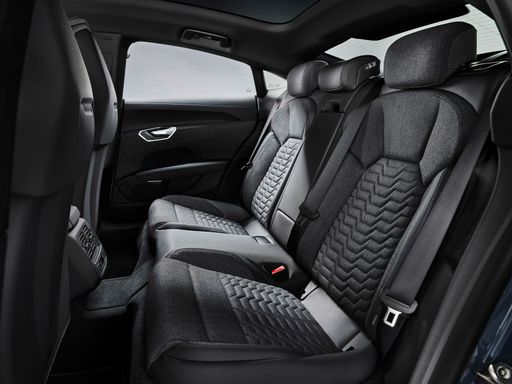 @ audi-mediacenter.com
@ audi-mediacenter.com
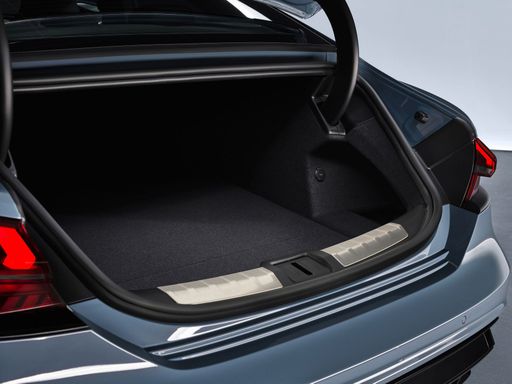 @ audi-mediacenter.com
@ audi-mediacenter.com
Dacia Spring
The Dacia Spring stands out as an affordable and environmentally friendly option in the electric vehicle market, combining practicality with a compact design ideal for urban settings. Its minimalist interior, while basic, provides all the essential features needed for a comfortable drive, reflecting its cost-effective approach. The vehicle's performance suits city driving, making it an appealing choice for those seeking an entry-level electric car.
details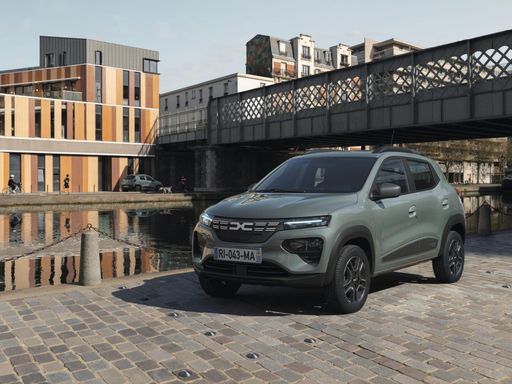 @ dacia-presse.de
@ dacia-presse.de
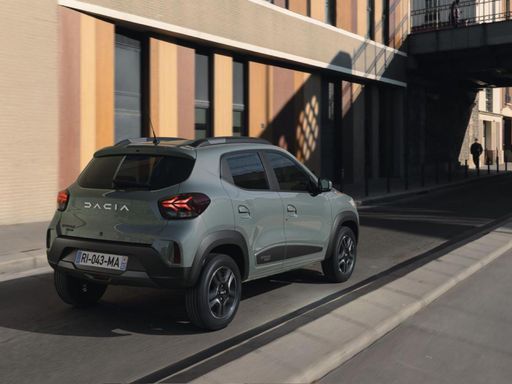 @ dacia-presse.de
@ dacia-presse.de
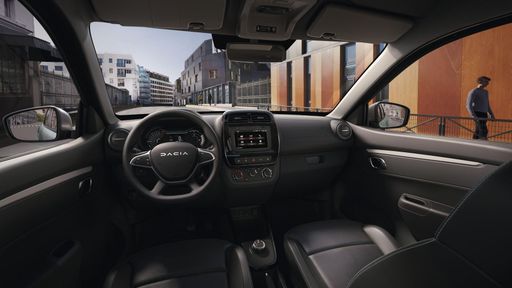 @ dacia-presse.de
@ dacia-presse.de

|

|
|
|
|
Costs and Consumption |
|
|---|---|
|
Price
93300 - 137600 £
|
Price
14500 - 17100 £
|
|
Consumption L/100km
-
|
Consumption L/100km
-
|
|
Consumption kWh/100km
17.9 - 19 kWh
|
Consumption kWh/100km
13.2 - 14.1 kWh
|
|
Electric Range
582 - 617 km
|
Electric Range
225 - 228 km
|
|
Battery Capacity
97 kWh
|
Battery Capacity
26.80 kWh
|
|
co2
0 g/km
|
co2
0 g/km
|
|
Fuel tank capacity
-
|
Fuel tank capacity
-
|
Dimensions and Body |
|
|---|---|
|
Body Type
Coupe
|
Body Type
SUV
|
|
Seats
4
|
Seats
4
|
|
Doors
4
|
Doors
5
|
|
Curb weight
2355 - 2395 kg
|
Curb weight
1013 - 1050 kg
|
|
Trunk capacity
350 - 405 L
|
Trunk capacity
308 L
|
|
Length
4989 - 5004 mm
|
Length
3701 mm
|
|
Width
1964 mm
|
Width
1583 mm
|
|
Height
1379 - 1414 mm
|
Height
1519 mm
|
|
Payload
455 - 485 kg
|
Payload
265 - 302 kg
|
Engine and Performance |
|
|---|---|
|
Engine Type
Electric
|
Engine Type
Electric
|
|
Transmission
Automatic
|
Transmission
Automatic
|
|
Transmission Detail
Reduction Gearbox
|
Transmission Detail
-
|
|
Drive Type
All-Wheel Drive
|
Drive Type
Front-Wheel Drive
|
|
Power HP
679 - 925 HP
|
Power HP
44 - 65 HP
|
|
Acceleration 0-100km/h
2.5 - 4 s
|
Acceleration 0-100km/h
13.7 - 19.1 s
|
|
Max Speed
245 - 250 km/h
|
Max Speed
125 km/h
|
|
Torque
625 - 995 Nm
|
Torque
113 - 125 Nm
|
|
Number of Cylinders
-
|
Number of Cylinders
-
|
|
Power kW
430 - 680 kW
|
Power kW
33 - 48 kW
|
|
Engine capacity
-
|
Engine capacity
-
|
General |
|
|---|---|
|
Model Year
2024 - 2025
|
Model Year
2024
|
|
CO2 Efficiency Class
A
|
CO2 Efficiency Class
A
|
|
Brand
Audi
|
Brand
Dacia
|
Audi e-tron GT
Introducing the Audi e-tron GT: A Fusion of Elegance and Performance
The Audi e-tron GT sets a new standard in the realm of electric vehicles, blending extraordinary performance with sophisticated design and unparalleled technology. As one of Audi's flagship electric models, it demonstrates the perfect synergy between sustainability and thrill.
Performance Unleashed: Power and Efficiency
The Audi e-tron GT comes equipped with an all-electric powertrain that delivers between 679 and 925 PS. This vehicle offers rapid acceleration, going from 0 to 100 km/h in just 2.5 to 3.4 seconds, depending on the model. With a maximum torque of up to 995 Nm, driving enthusiasts can expect instantaneous response and relentless dynamics on every journey.
Despite its high performance, the e-tron GT maintains impressive efficiency with a consumption rate ranging from 18.2 to 19 kWh per 100 km. This efficiency enables a remarkable electric range of between 582 to 605 km, thanks to its substantial 97 kWh battery capacity. With a CO2 output of zero, the Audi e-tron GT stands as an exemplar of green transportation, reflecting the brand's commitment to sustainability.
Advanced Engineering: Quattro and Beyond
The e-tron GT features Audi's iconic quattro all-wheel-drive system, ensuring superior traction and stability under any driving condition. Coupled with a reduction gear transmission, this setup grants the vehicle precision handling and a truly engaging driving experience.
Additionally, the model includes adaptive air suspension and dynamic steering, enhancing riding comfort and precise control, whether navigating through urban streets or cruising on the motorways.
Design Excellence: Form Meets Function
Visually, the Audi e-tron GT is a masterpiece of automotive design, exuding a dynamic yet refined aesthetic. With dimensions stretching from 4989 to 4997 mm in length and a broad 1964 mm in width, it commands a significant presence on the road without sacrificing aerodynamics. This coupe features a sleek silhouette and muscular lines that highlight its sporty nature while contributing to optimal airflow and efficiency.
The interior continues the theme of sophisticated engineering, with a focus on driver-centric design and high-quality materials. Offering sumptuous comfort for four passengers, it features advanced digital displays and an intuitive interface equipped with the latest infotainment and connectivity options.
Innovation in Safety and Convenience
The e-tron GT does not compromise on safety, featuring an array of driver assistance systems. These technologies include adaptive cruise control, lane departure warnings, and emergency braking assistance, all designed to create a safe, worry-free driving experience.
Moreover, the e-tron GT includes practical innovations such as rapid charging capabilities, an essential convenience for today's electric vehicle drivers. With fast-charging options, drivers can quickly recharge the vehicle, making it an excellent companion for long-distance travels.
Conclusion: A Visionary Step Forward
The Audi e-tron GT is more than just a car; it's a vision of the future. Balancing cutting-edge technology, breathtaking performance, and eco-conscious engineering, it epitomises what the future of driving looks like. As we continue the transition toward electrification, the e-tron GT stands as a testament to Audi's dedication to leading the charge with style and innovation.
Dacia Spring
The Revolution of Affordable Electric Mobility: The Dacia Spring
The automotive world has witnessed remarkable advancements in electric vehicles (EVs), with the Dacia Spring emerging as a noteworthy contender in the affordable segment. Combining efficiency, affordability, and practicality, the Spring offers an intriguing prospect for eco-conscious individuals and city dwellers alike.
Powertrain and Performance: A Look Under the Hood
The Dacia Spring is equipped with an electric motor that delivers between 44 to 65 PS, translating into a versatile driving experience tailored to urban landscapes. It operates on a front-wheel-drive system, ensuring a familiar and manageable handling experience.
Dacia Spring's electric engine is paired with an automatic transmission, utilising a reduction gearbox. This setup allows for smooth acceleration and a top speed of 125 km/h, ensuring that everyday driving scenarios are handled with ease.
Efficiency and Range: Eco-Friendly without Compromise
Efficiency is a cornerstone of the Dacia Spring's design, boasting an energy consumption of just 13.2 to 14.1 kWh per 100 km. When fully charged, its 26.8 kWh battery offers a respectable range of 225 to 228 km, making it ideal for daily commutes and short trips.
Furthermore, the Spring takes pride in its commendable CO2-efficiency class A, emphasising its commitment to reducing environmental footprint with a zero-emission profile.
Design and Practicality: Compact yet Comprehensive
Lying in the SUV category, the Dacia Spring is compact with dimensions of 3701 mm in length and 1583 mm in width, making it a perfect match for urban environments where space is at a premium. Despite its modest size, it provides a generous boot space of 308 litres, ensuring practicality isn’t sacrificed.
Comfort and Interior: For the Everyday Journey
The Dacia Spring comfortably seats up to four passengers. The cabin offers a minimalist yet functional design, available in multiple trim lines including Essential, Expression, and Extreme, allowing customers to choose according to their taste and requirement.
With its ergonomic layout and simplicity, the interior is crafted to enhance the driving experience by focusing on essential needs, avoiding unnecessary distractions.
Affordability and Accessibility: Breaking Barrier
The Dacia Spring stands out in the electric vehicle market due to its affordability, with prices ranging from 16,900 to 19,900 €. This ensures that environmentally friendly transportation is accessible to a broader audience.
Additionally, the Spring allows for cost-effective maintenance and operational expenses, offering monthly running costs between 570 to 599 € and cost per km between 22.8 to 24 cents, making it an economical choice in the long run.
Final Thoughts: The Future of Urban Mobility
In summary, the Dacia Spring serves as a testament to how electric vehicles can be both affordable and practical, without compromising on essential features. Whether it is for the eco-conscious urbanite or those looking for a cost-effective daily driver, the Spring is positioned as a viable solution for navigating the future of urban mobility.
Which drive types are available for the Audi e-tron GT?
Available as All-Wheel Drive.
The prices and data displayed are estimates based on German list prices and may vary by country. This information is not legally binding.
